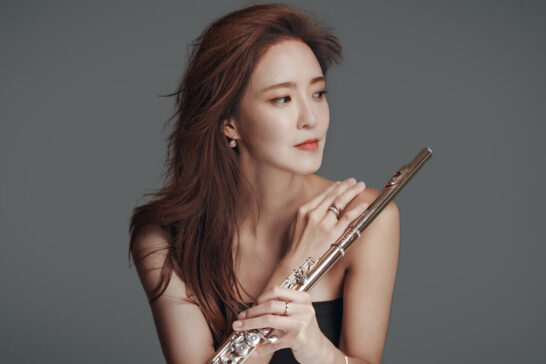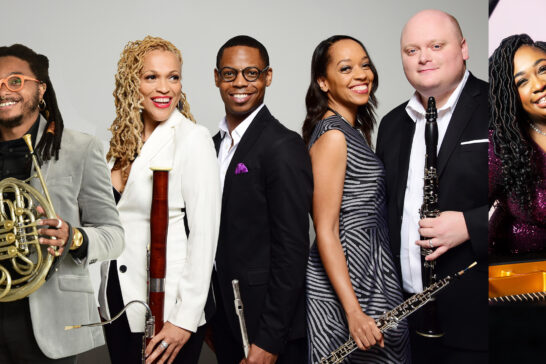Notes from the Archives: The Piano Legacy at Curtis

The piano department at the Curtis Institute of Music is its oldest department, and one of its most distinguished. When Mary Louise Curtis Bok began planning a new music conservatory in Philadelphia, she turned to one of her oldest and dearest friends, renowned pianist Josef Hofmann, for assistance. Although Hofmann offered guidance on all facets of the new school, his immediate priority was to take advantage of that rarest of opportunities: unlimited freedom to curate a piano faculty worthy not only of Mrs. Bok’s vision, but his own specific beliefs about what a representative, world-class piano department should be.
Mary Louise Curtis Bok, by virtue of being born into a wealthy and well connected musical family, was introduced to the finest musicians from an early age. An accomplished pianist herself, she first met Hofmann while still living with her parents, as he would often visit the Curtis estate while in Philadelphia to perform. The relationship of Hofmann with the Curtis family further expanded when he served as the music editor for the Ladies Home Journal (published by the Curtis Publishing Company, founded by Mary’s father, Cyrus H.K. Curtis), which saw him write articles as well as answer letters in an advice column for 11 years. In addition, Hofmann played various recitals and concerts in the area to raise money for the Settlement Music School, another Philadelphia music conservatory with which Bok was deeply involved before founding Curtis.
Thus, when Bok decided to proceed with plans for a new music institute, Hofmann was the logical choice to assist her, both personally and professionally. In tandem with Philadelphia Orchestra conductor Leopold Stokowski, Hofmann worked closely with the Boks in developing every aspect of the new school. Although not lacking a campus (three mansions off Rittenhouse Square in Philadelphia had been purchased and donated by the Boks), adequate funding, or a sweeping vision, a substantial obstacle remained – attracting the high level of talent the founders knew was essential for success. To entice the likes of Marcella Sembrich (voice), Carl Flesch (violin), Louis Bailly (viola), Felix Salmond (violoncello), Lynnwood Farnam (organ), and Artur Rodzinski (orchestra), Hofmann and Stokowski (though to a lesser extent as he was then still a rising talent) exercised their influence and powers of persuasion to draw these and other instructors from across Europe and the United States.
The efforts of Hofmann and Stokowski paid off and, when Curtis opened its doors on October 13, 1924, the quality of its music and academic faculties was quickly recognized. According to a 1928 feature on Curtis in the Musical Courier, “The response was immediate. The realization by famous musicians and educators throughout the country that here was something new and epoch making in art brought forth a large outpouring of candidates for admission.” Furthermore, it was later said of Hofmann in particular that “…no artistic director did more for the Curtis Institute than Josef Hofmann in establishing a world class institute of musical learning, putting Philadelphia on the world cultural map.” Though the school’s success had quickly exceeded even the greatest expectations of its founders, it was the piano department that shone just a bit brighter as the crown jewel of the newly minted conservatory.
Hand-picked by Hofmann, the piano faculty represented the finest of the American and European schools, with each instructor bringing their individualized backgrounds, methods, styles, and techniques. There was George Boyle, the Australian/American pianist who studied under Ferruccio Busoni and gave the American premiere of Debussey’s Preludes in 1910; Pittsburgh born David Saperton, known for being the first to play and completely transcribe the works of Leopold Godowsky; the Polish/French harpsichordist Wanda Landowska, the first to record the entirety of Bach’s Goldberg Variations on the harpsichord and credited with reviving it as a virtuosic instrument; German pedagogue and famed chamber musician Wilhelm Bachaus, whose interpretations of Mozart, Beethoven, Chopin, Brahms, and Schumann were widely esteemed; Polish-born Moritz Rosenthal, an outstanding student of Franz Liszt and Kammervirtuoso for the Emperor of Austria; and finally there was Isabelle Vengerova, the famed Russian pedagogue formerly of the Imperial Conservatory in St. Petersburg, who, in addition to rigorous (and often intimidating) instruction, had an innate psychological insight into her pupils which helped her to further push them to their highest potential.
Between them, these inaugural members of Curtis’s piano faculty taught a veritable who’s who of notable Curtis alums including Samuel Barber, Jeanne Behrend, Ralph Berkowitz, Leonard Bernstein, Jorge Bolet, Anthony di Bonaventura, Abram Chasins, Shura Cherkassky, Lukas Foss, Sidney Foster, Gary Graffman, Jacob Lateiner, Ezra Rachlin, Abbey Simon, and Eleanor Sokoloff. Many of these students, including Barber, Bolet, Graffman, and Sokoloff returned to Curtis to perpetuate established teaching conventions while simultaneously infusing their own personal styles into the methods and techniques. Thus the tradition established 94 years ago continues today with a piano faculty that respects its venerable and historical foundations while simultaneously building upon them a modern, 21st century department.
In being given the mandate to help establish Curtis, Josef Hofmann undertook his charge very seriously and, among other things, assembled an internationally acclaimed piano department. By gathering a wide array of talent, Hofmann ensured that a variety of backgrounds, methodologies, thought, technique, and teaching were represented in order to best offer students a well-rounded and complete learning experience. Nearly 100 years later this investment is still paying off as evidenced by the strength of the piano program, the success of its alums, and the number of former students who return to Curtis as teachers and mentors themselves. It is in this way that the cycle continues, perpetuating and expanding on Hofmann and Bok’s original vision, keeping it both relevant and thriving for years to come.
Kristina Wilson, archivist
For more information on Curtis history, visit the Curtis Archives.


